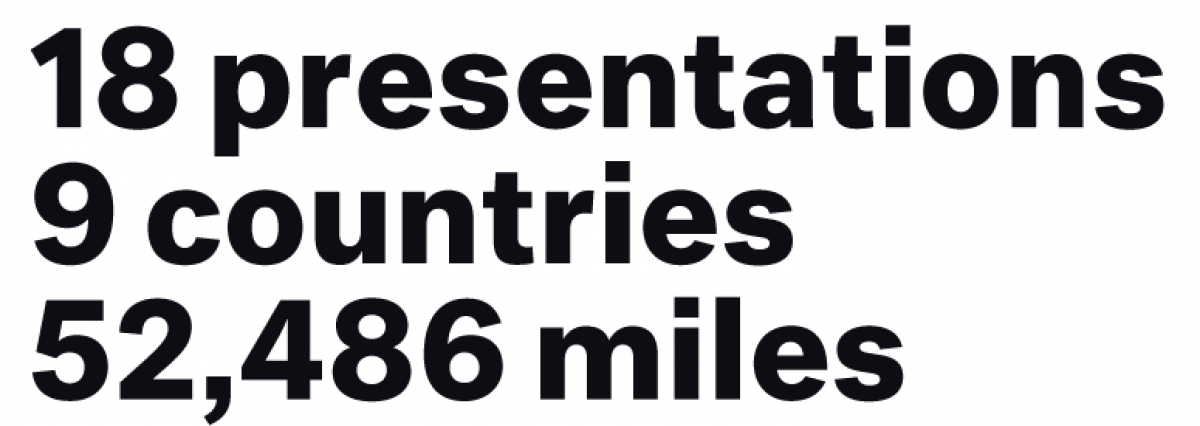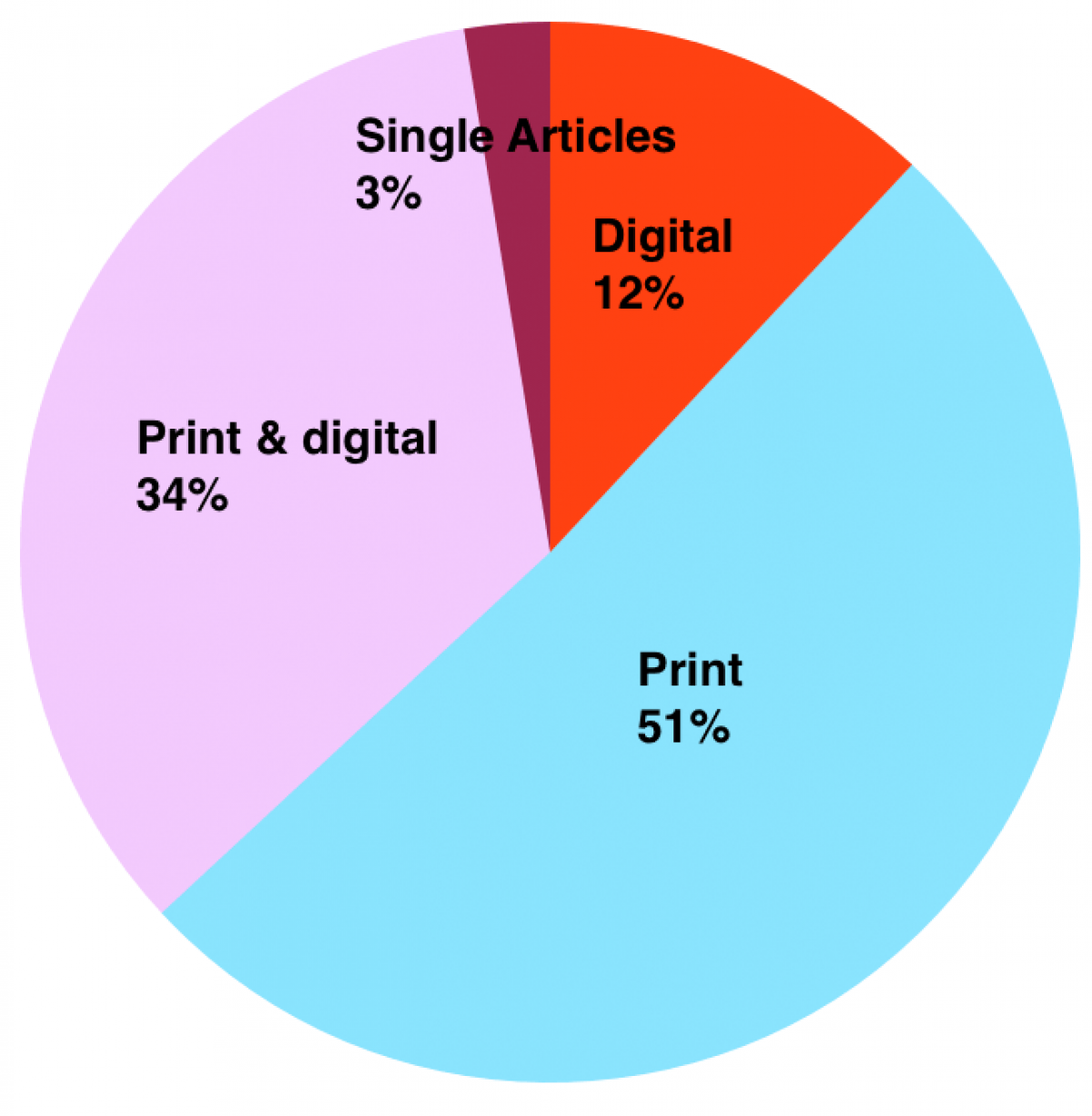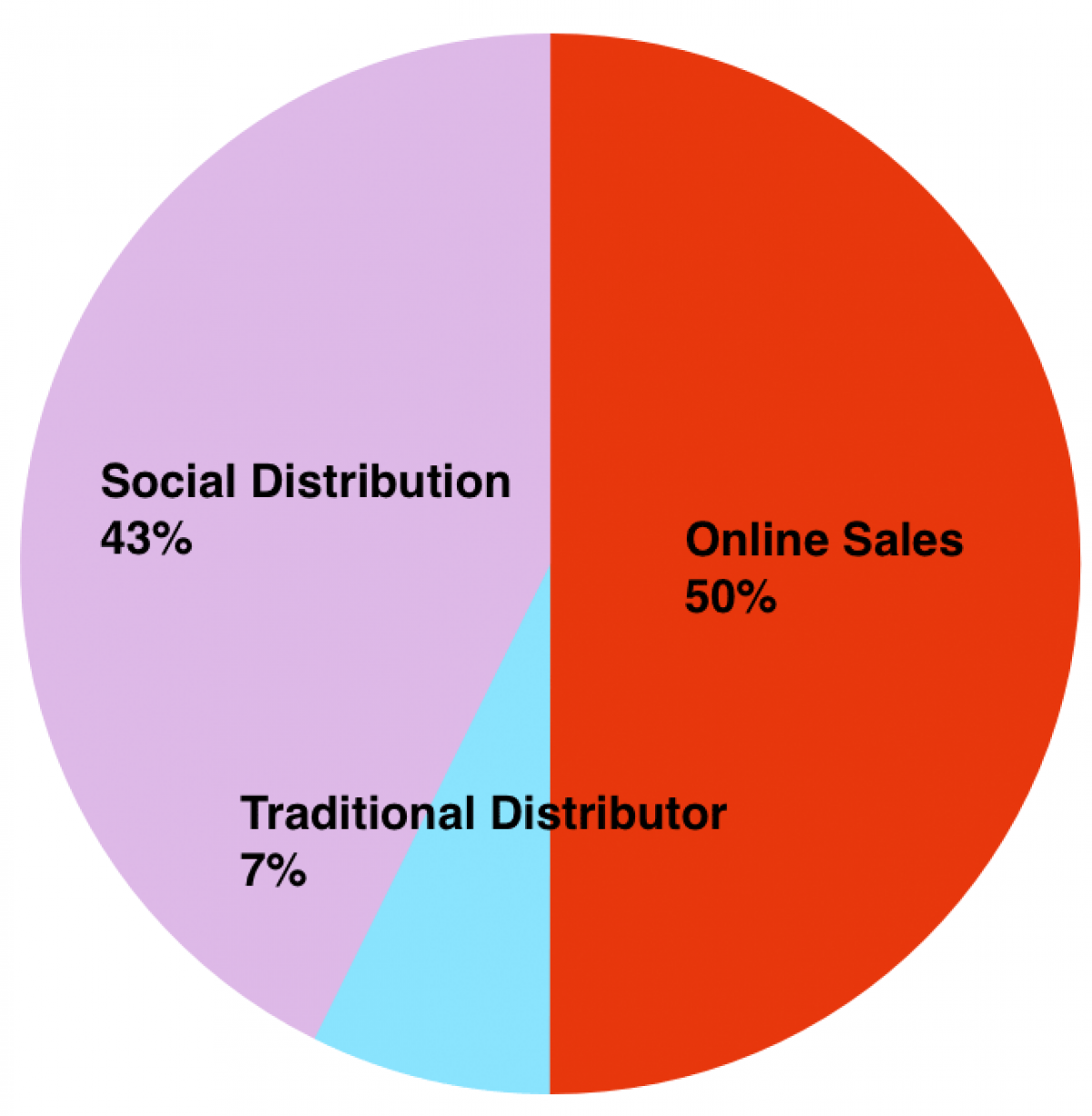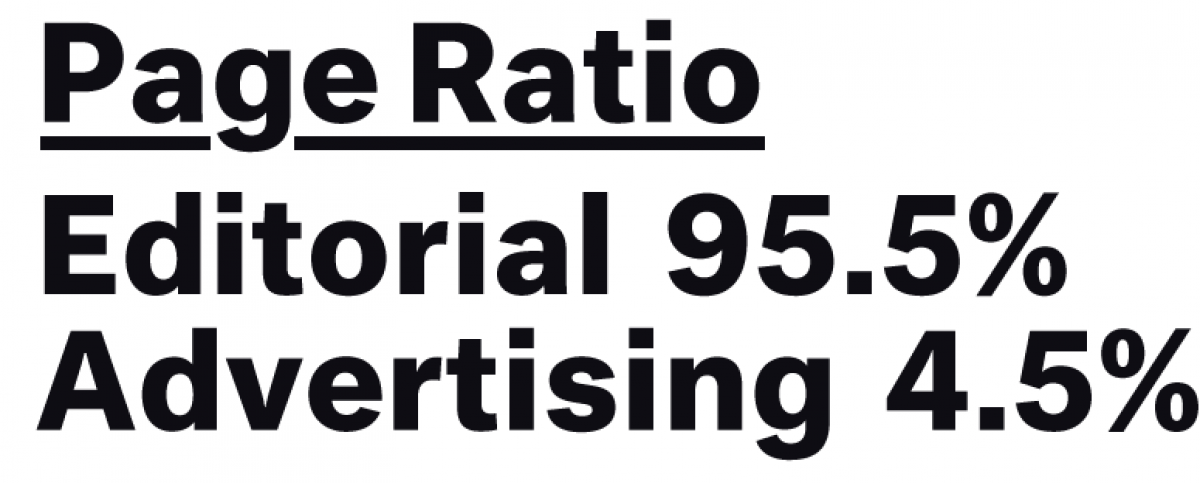State of the Magazine
First year of Works That Work magazine in numbers.
The end of the year is a time when many people pause for reflection, and as incredible as it may seem, this marks the end of WTW’s first year of existence, so this is a good time to take stock of where we are and where we’ve been. Here are some of the highlights of what we (and that ‘we’ includes you and the whole reader community) have been doing.
Reader Meetings
We have been meeting together all over the world, a feat which included over 50,000 miles (80,467 km) of travel (that’s about twice the Earth’s circumference) to do regional launches and present the magazine to various communities, including The Hague, London, São Paulo, Rio de Janeiro, Vancouver, San Francisco, Moscow, Amsterdam, Arnhem, Žilina, Košice, Santiago de Chile, Utrecht, Moscow, London, Warsaw, Nijmegen, and Birmingham. All in all, we promoted WTW at 18 reader events, two book fairs (New York Art Book Fair, Tokyo Art Book Fair) and Dutch Design Week.

Thanks so much to the hosts and organisers of the following events, because we couldn’t have done it without you!
Stroom Den Haag, X Marks the Bökship, Leste, ímã mobilizadores, Artspeak, Ross Milne, Tipocratia, Bebel Abreu, Emily Carr University of Art, TYPO San Francisco, FLACON design-zavod, Pakhuis de Zwijger, Tabačka, Stanica Zariečie, Pontificia Universidad Católica de Chile, Centro Cultural Mil Metros Cuadrados, Creative Mornings Utrecht, British Higher School of Design, Serebro Nabora, Design Debate Warsaw, LCC London, LhGWR, Nijmeegs Ontwerp Platform, An Endless Supply, and Library of Birmingham
Sales
As of today we’ve sold 5,460 printed copies of the magazines (including hybrid print & digital copies). The print edition of the first issue is sold out, but we still have a few boxes of the second issue. We also sold 689 digital-only editions, which amounts to about 12% of total sales. This percentage is growing, especially since the first issue is now available only digitally.

When we launched the magazine, we spoke extensively about distribution as a factor in the design of the operation. We started the Social Distribution experiment, paying readers for bringing the magazine to their communities and friends. So how has that worked, and what part does it play in our sales statistics?
We sold 2,731 printed copies directly from our website, making it the single largest point of sale. We are grateful for this, as it contributes significantly to our finances, (we keep 100% of the sale price this way).
We also work with one traditional book distributor (because some shops refuse to carry the periodicals unless they are delivered by contractually bound distributors.) Idea Books Amsterdam, whose network reaches across many different countries, sold 400 copies, but we receive only 40% from those sales, not even enough to cover the production costs of the magazines.
And finally, the results of the Social Distribution (drumroll please): you readers sold 2,329 copies, nearly as many as the website! A significant percentage of these sales took place at reader gatherings and conferences, but also via our distribution hubs. We receive 50% of the cover price for these sales. Congratulations to our reader/distributors for making the experiment a success. Keep up the good work!

The magazine is now being sold at 82 different locations from bookstores and galleries to cafes and collectives. (Still no sales points in France or Italy, however. Who wants to be the first?)
How much does it cost to produce a magazine?
Paying our authors and everyone else involved in the process is important, and authors’ honorariums amount to around €7,000–8,000 (US$9,600–11,000) per issue. Working with great designers, printers, binders and lithographers, our biggest expense, costs about €13,000–16,000 (US$17,900–22,000) per issue. We offer free shipping in Europe, and charge €4 (US$5.50) for shipping outside of Europe, which is less than actual shipping price, paying a difference of about €4,000 (US$5,500).
For a print run of 3,500 copies, the cost per issue comes to more than €7 (US$9.60). This is part of the reason for our fairly high cover price of €16/US$20.
But expenses don’t end with printing the hardcopy edition. We have significant web development costs, over €40,000 (US$55,000) to date. This includes development of our initial crowd-funding site, the payment system, the online editing system that streamlines our collaboration with contributors from all over the world, the actual website, the back-end system, and the eBook export system. Of course, there are also expenses such as the office rent and my own time, which is something I am willing to invest into the magazine.
Advertising, Patrons
When you do the math, it is clear that our costs are higher than our income. We would need to significantly increase the number of sold copies (at 100% of the cover price) to make it a viable long-term project, something that we hope to do, but takes time.
This year we also announced an alternative way to contribute to the magazine: patron support. Patrons contributed €3,400 (US$4,700) this year, or to put it another way, they bought all of us three more pages of content (by eliminating three pages of advertising), so we all owe them our gratitude. If we were to raise €8000 (US$11,000) per issue from our patrons, we could drop advertising completely. If that sounds good to you, you can still get on board for Issue 3.
During this first year, advertising generated €8,000 (US$11,000) or 13% of our total revenue. In other words, readers contributed 87% of the total revenue, highly unusual in the world of magazine publishing, where advertising typically accounts far over 90% of magazine revenues.
From the start, we’ve been committed to limiting advertising pages to a maximum of 10% of the magazine. In reality we ran just eight advertising pages in 2013, or 4.5%.

How Can I Help?
Many readers have asked how they can help. First, all of you who are involved, whether you are reading this website or the actual magazine, participating in Social Distribution, or even organising and attending events, are helping, and we are extremely grateful to you. Want to do more? Getting a subscription helps us a lot. Spreading the word is also invaluable, so tell your friends about the magazine too. Ask your school, company, or local library to get a subscription too. Many of you also help also getting the magazine to places we would never find otherwise, and small packages of magazines have travelled halfway across the world in readers’ suitcases this year. Let us know where you travel, and how much free room you have (airline baggage limits are usually 23kg/50lb).
We’d like to thank everyone who contributed to our first two issues, all the talented writers, photographers, researchers and translators who brought us stories, pictures and information from all over the world, as well as all the readers as fascinated as we are by works that work. We wish you all a wonderful holiday season and a new year full of creativity and delight.
Together we can make a great magazine.